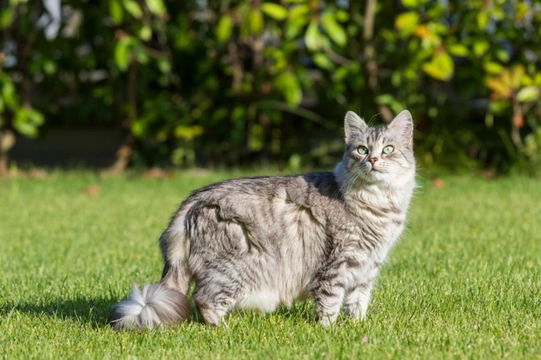
What type of cats should allergy sufferers avoid?
Suffering from an allergy to cats can be very limiting if you have to avoid the homes of certain friends because you know you’ll leave with a runny nose and itchy eyes, but if you are allergic to cats and still love our feline friends, knowing that you might never be comfortable around them can be quite upsetting.
However, even if you are acutely allergic to most types of cats, it is entirely possible that you will come across the odd one that simply doesn’t seem to affect you, or that has a less acute effect on you than most others.
This might make cat ownership viable for you if you are lucky enough to find such a cat and it is offered for sale, and there are certain cat breeds and types that tend to be less problematic for allergy sufferers as a whole than others are.
On the flipside of this, there are certain types and breeds of cats at the other end of the spectrum that in their turn, tend to be more problematic for most allergy sufferers than the average cat, and so, that are best avoided!
Allergies to cats are caused by the presence of a protein found in cat saliva called Fel d1, and some types of cats simply produce – or spread – more of it than others.
This means that there are a range of factors that dictate how much or little any given cat might be likely to trigger someone’s allergies, and allergies are hugely variable and unreliable too, and so a cat that affects one person badly might have no effect on another at all!
However, as a very broad guide to provide some direction, here are some types of cats that people who suffer acutely from cat allergies might want to avoid, or that might be more likely than most other types of cats to trigger their allergies. Read on to learn more.
Male cats
First of all starting alone gender lines, male cats of all breeds and types produce more of the Fel d1 protein that can result in allergy symptoms than female cats, so you may find that male cats are more prone to causing you to have an allergy flare-up than even a female cat from the same litter!
Neutering doesn’t seem to make any difference to how much Fel d1 any given cat produces though, for either male or female cats.
Sphynx cats or hairless cats
The sphynx cat is a hairless cat breed, and as such, it is often included in lists of cat breeds that might be less prone to triggering allergies – but this is very contentious! Cat fur that is shed spreads dander and Fel d1 proteins, and the sphynx of course has no hair to shed – but that Fel d1 is present in cat saliva, and sphynx cats still lick and groom themselves like all other cats, spreading that Fel d1 to their skin.
This means that direct contact like stroking a sphynx cat will result in more, not less, physical exposure to Fel d1 than would occur if you stroked a furry cat, and that the sphynx is also apt to transfer more of it onto the surfaces that they come into direct contact with too.
On the flipside, sphynx cats usually need to be bathed around once a week to keep their skin in good condition, and this frequency of bathing might keep the levels of Fel d1 on their skin low enough as to make them unlikely to trigger your allergies – so consider how the cat is cared for and how often they are bathed and proceed accordingly!
The Persian cat and other heavy shedding breeds
Longhaired cats are actually not necessarily more likely to trigger allergies than shorthaired cats are, but cats with fur of any length that shed heavily will spread more allergenic dander around the home and so, be more likely to trigger allergies in visitors.
The Persian cat, for example, tends to be a heavy shedding breed, and so visiting their home might make your allergies flare up. On the flipside, if the cat is brushed and groomed very regularly to remove their loose fur, you might find that they don’t affect you too badly!
Darker coloured cats
There is a reasonable amount of anecdotal evidence and in many cases, a widely accepted belief that cats with dark coats tend to be more likely to trigger allergies than those with light coats, although as yet no studies have been undertaken to check if darker furred cats really do carry or spread more of the Fel d1 protein than their lighter-coated counterparts.
However, you might find that your friends with darker coated cats are more likely to see you red eyed and runny nosed than your friends with light coloured cats!
Silver cats
Again without any firm science to back it up, there is also some suggestion that cats with silver coloured coats are more likely to trigger allergies than cats of other colours.
In the Siberian cat breed, silver coated cats were found to produce more Fel d1 protein than other cats of the breed; but this cannot be taken as a reliable indicator that silver-coloured cats are best avoided, because Siberian cats of all colours have a much higher chance of producing less Fel d1 than moggies anyway and so, being a good potential breed for allergy sufferers as a whole, so this is all relative!



